Space
Astronomers at the Naval Research Laboratory (NRL) have produced the first images of the sky from a prototype of the Long Wavelength Array (LWA), a revolutionary new radio telescope to be constructed in southwestern New Mexico. The images show emissions from the center of our Galaxy, a supermassive black hole, and the remnant of a star that exploded in a supernova over 300 years ago. Not only a milestone in the development of the LWA, the images are also a first glimpse through a new window on the cosmos. "First light" is an astronomical term for the first image produced with a telescope. It…
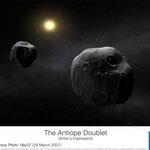
Combining precise observations obtained by ESO's Very Large Telescope with those gathered by a network of smaller telescopes, astronomers have described in unprecedented detail the double asteroid Antiope, which is shown to be a pair of rubble-pile chunks of material, of about the same size, whirling around one another in a perpetual pas de deux. The two components are egg-shaped despite their very small sizes.
The asteroid (90) Antiope was discovered in 1866 by Robert Luther from Dusseldorf, Germany. The 90th asteroid ever discovered, its name comes from Greek mythology. In 2000, William…
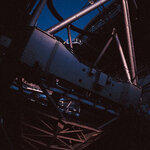
Gamma ray bursts (GRBs), the brief flashes of light signalling distant, extremely energetic events, have been elusive targets for astronomical observation. (It's something like the fairground game of Whack-a-Mole:by the time you're aware of the GRB, it's vanished, and you have no way of knowing where the next one will appear.) An orbiting observatory that quickly alerts ground-based astronomers about GRBs has allowed a very quick response and an unprecedented look at the GRBs' aftermath.
GRBs are the most energetic and among the most enigmatic events that we see happening in the…

From Mary, in response to my request for more information about the scientists who gave us the YORP effect:
"O'Keefe was my father. He was also responsible for discovering that the earth is (slightly) pear shaped, for which reason, we received many lugs of pears for Christmas for several years. He figured out how to map China when going from flat to round was unusual (during WWII) and he figured out that a satellite would help us to map the earth. He said tektites were from the Moon, and when nobody would listen, we put it on his funeral program so he'd have one more chance. He liked Wyeth…
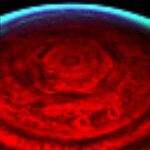
An odd, six-sided, honeycomb-shaped feature circling the entire north pole of Saturn has captured the interest of scientists with the Cassini mission.
This atmospheric feature was already imaged by NASA’s Voyager 1 and 2 spacecraft over two decades ago. The fact that it has appeared in Cassini images indicates that it is a long-lived feature. A second hexagon, significantly darker than the brighter historical feature, is also visible in the Cassini pictures. The spacecraft's visual and infrared mapping spectrometer (VIMS) is the first instrument to capture the entire hexagon feature in one…

Using ESO's Very Large Telescope, an international team of astronomers has shown how to use the chemical composition of stars in clusters to shed light on the formation of our Milky Way. This discovery is a fundamental test for the development of a new chemical tagging technique uncovering the birth and growth of our Galactic cradle.
The formation and evolution of galaxies, and in particular of the Milky Way - the 'island universe' in which we live, is one of the major puzzles of astrophysics: indeed, a detailed physical scenario is still missing and its understanding requires the joint…
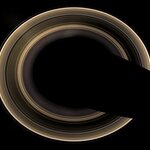
The Hubble Space Telescope (HST) has produced some of the most famous still images in astronomy (e.g., the pillars of creation in the Eagle Nebula). The latest images from HST are movies of Saturn and its moons. Astronomers wrote software that multiplies the relatively small number of images taken by Hubble for each event into the much larger number needed to make a movie. The original images covered several hours of observing time, and the videos range in length from 15 to 30 seconds, so time is compressed in the videos and the motions of Saturn and its moons are speeded up.
Two of the…
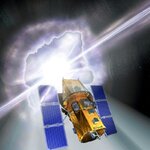
Scientists have used the world's largest robotic telescope to make the earliest-ever measurement of the optical polarisation* of a Gamma Ray Burst (GRB) just 203 seconds after the start of the cosmic explosion. This finding, which provides new insight into GRB physics, is published in Science today (15th March 2007).
The scientists from Liverpool John Moores University and colleagues in the UK, Italy, France and Slovenia used the Liverpool Telescope on the island of La Palma and its novel new polarimeter, RINGO, to perform the measurement following detection of the burst by NASA's Swift…
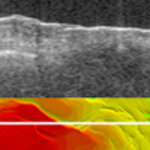
This new estimate comes from mapping the thickness of the dusty ice by the Mars Express radar instrument that has made more than 300 virtual slices through layered deposits covering the pole. The radar sees through icy layers to the lower boundary, which in places is as deep as 3.7 kilometres below the surface.
"The south polar layered deposits of Mars cover an area as wide as a big portion of Europe. The amount of water they contain has been estimated before, but never with the level of confidence this radar makes possible," said Dr. Jeffrey Plaut of NASA's Jet Propulsion Laboratory,…
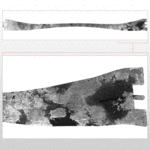
Instruments on NASA's Cassini spacecraft, part of the joint NASA/ESA/ASI Cassini-Huygens mission to Saturn and its moons, have found evidence for seas, likely filled with liquid methane or ethane, in the high northern latitudes of Saturn's moon Titan.
One such feature is larger than any of the Great Lakes of North America and is about the same size as several seas on Earth.
This image of Saturn’s largest moon, Titan, obtained by Cassini's radar instrument during a near-polar flyby on 22 February 2007, features dunes and lakes, one of which is larger than any lake on Earth and could be…